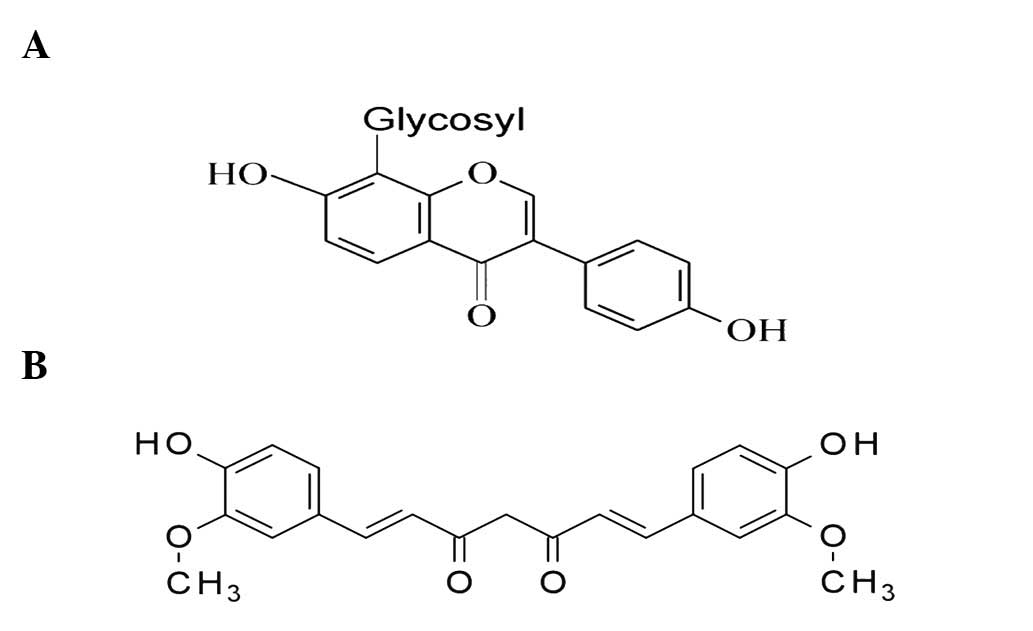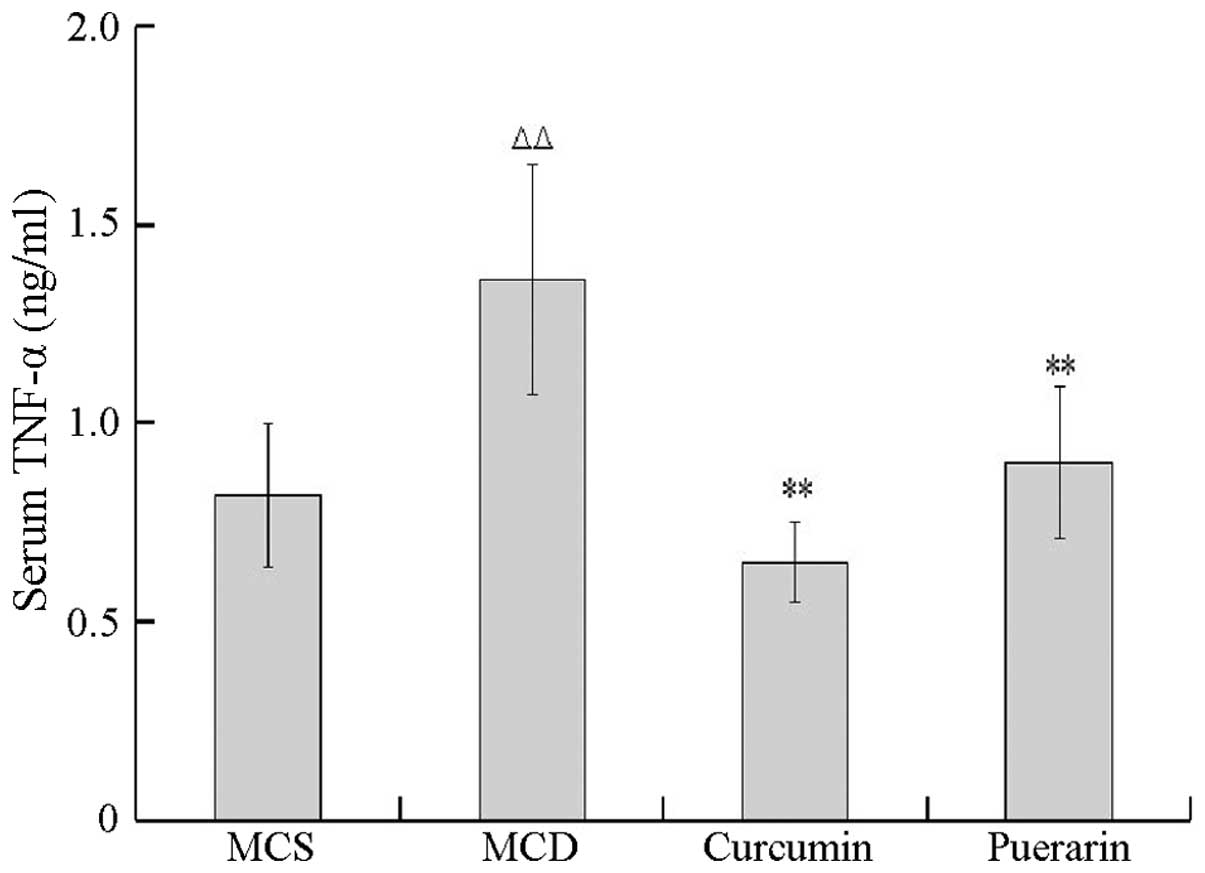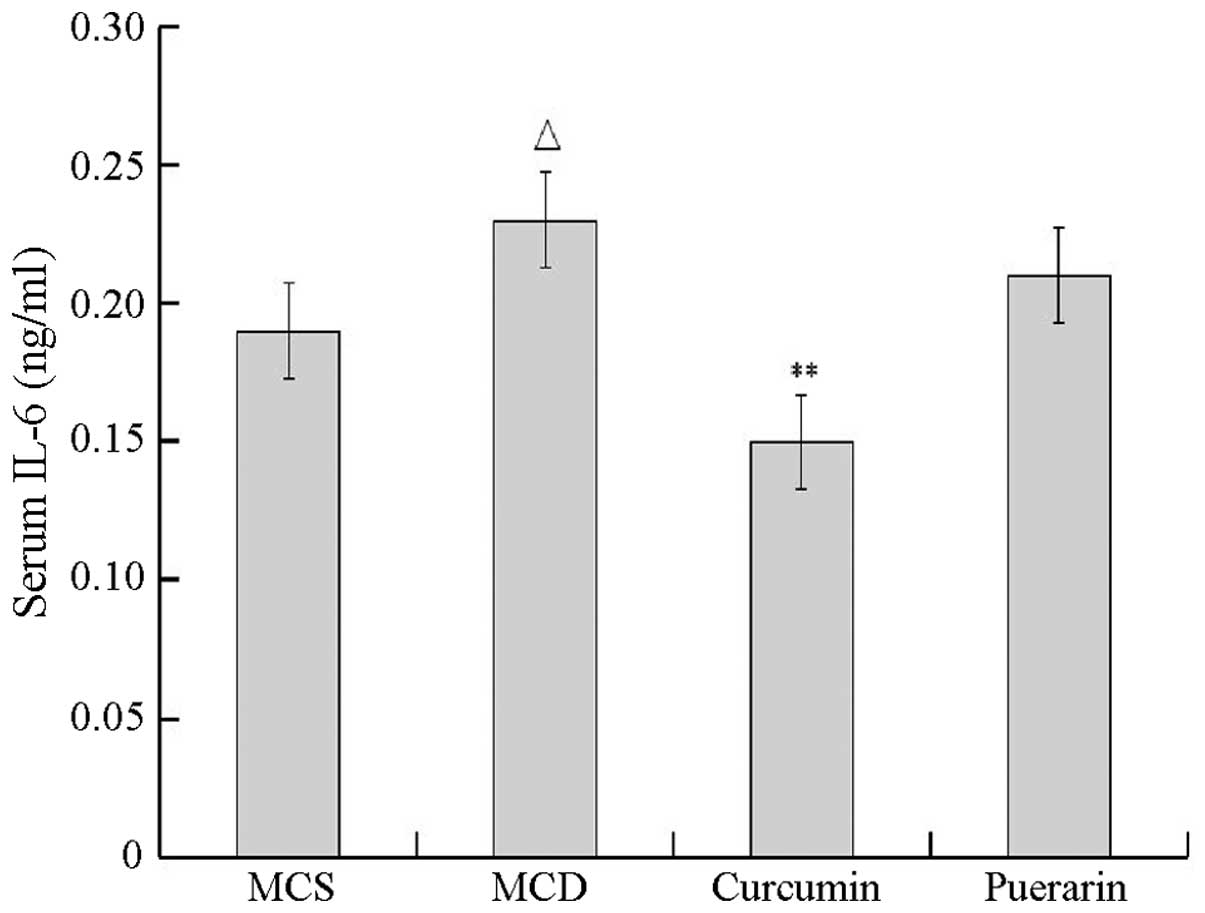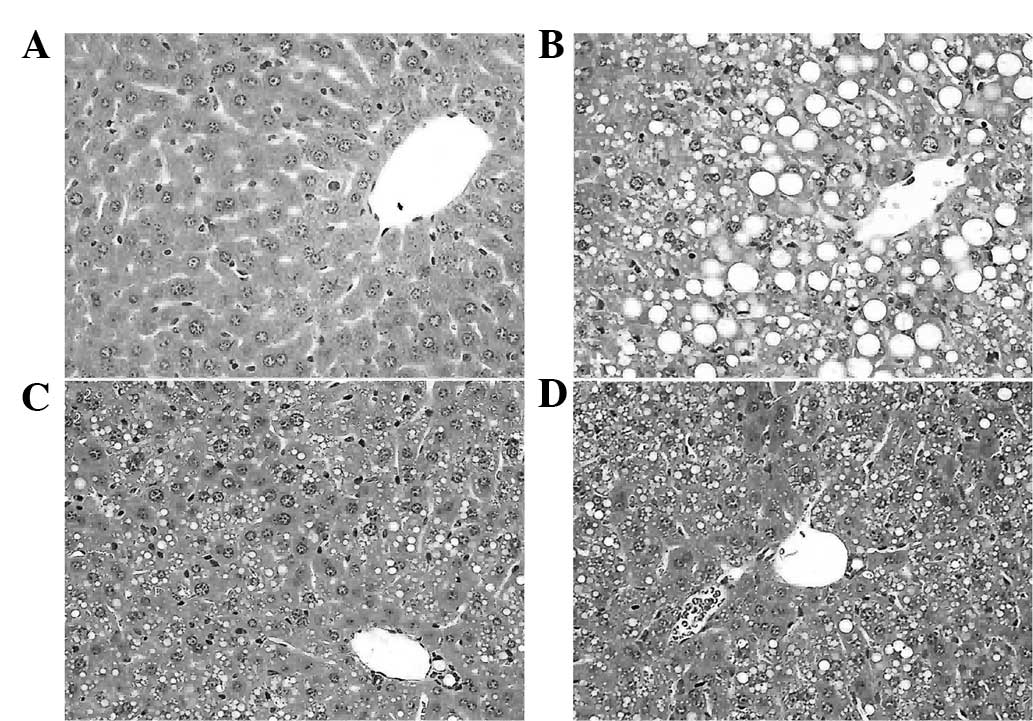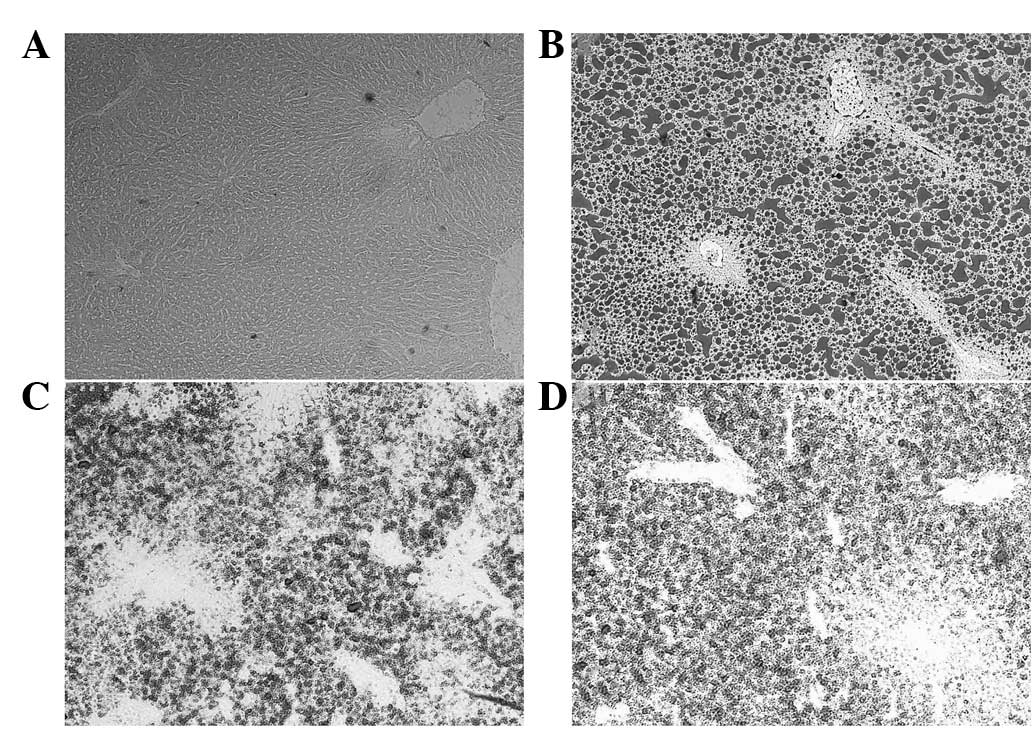|
1
|
Williamson RM, Price JF, Glancy S, et al;
Edinburgh Type 2 Diabetes Study Investigators. Prevalence of and
risk factors for hepatic steatosis and nonalcoholic fatty liver
disease in people with type 2 diabetes: the Edinburgh Type 2
Diabetes Study. Diabetes Care. 34:1139–1144. 2011. View Article : Google Scholar : PubMed/NCBI
|
|
2
|
Valantinas J, Apanaviciene DA, Maroziene L
and Sveikata A: The prevalence of metabolic risk factors among
outpatients with diagnosed nonalcoholic fatty liver disease in
Lithuania. Med Sci Monit. 18:PH57–PH62. 2012. View Article : Google Scholar : PubMed/NCBI
|
|
3
|
Chitturi S and Farrell GC:
Etiopathogenesis of nonalcoholic steatohepatitis. Semin Liver Dis.
21:27–41. 2001. View Article : Google Scholar : PubMed/NCBI
|
|
4
|
Reid AE: Nonalcoholic steatohepatitis.
Gastroenterology. 121:710–723. 2001. View Article : Google Scholar : PubMed/NCBI
|
|
5
|
Kallwitz ER, McLachlan A and Cotler SJ:
Role of peroxisome proliferators-activated receptors in the
pathogenesis and treatment of nonalcoholic fatty liver disease.
World J Gastroenterol. 14:22–28. 2008. View Article : Google Scholar : PubMed/NCBI
|
|
6
|
Wu CW, Chu ES, Lam CN, et al: PPARgamma is
essential for protection against nonalcoholic steatohepatitis. Gene
Ther. 17:790–798. 2010. View Article : Google Scholar : PubMed/NCBI
|
|
7
|
Yuhas Y, Berent E, Cohen R and Ashkenazi
S: Roles of NF-kappaB activation and peroxisome
proliferator-activated receptor gamma inhibition in the effect of
rifampin on inducible nitric oxide synthase transcription in human
lung epithelial cells. Antimicrob Agents Chemother. 53:1539–1545.
2009. View Article : Google Scholar
|
|
8
|
Sanyal AJ, Mofrad PS, Contos MJ, et al: A
pilot study of vitamin E versus vitamin E and pioglitazone for the
treatment of nonalcoholic steatohepatitis. Clin Gastroenterol
Hepatol. 2:1107–1115. 2004. View Article : Google Scholar : PubMed/NCBI
|
|
9
|
Promrat K, Lutchman G, Uwaifo GI, et al: A
pilot study of pioglitazone treatment for nonalcoholic
steatohepatitis. Hepatology. 39:188–196. 2004. View Article : Google Scholar : PubMed/NCBI
|
|
10
|
Elasy TA and Griffin M: Thiazolidinedione
use, fluid retention, and congestive heart failure: a consensus
statement from the American Heart Association and American Diabetes
Association: response to Nesto. Diabetes Care. 27:20962004.
View Article : Google Scholar
|
|
11
|
Nesto RW, Bell D, Bonow RO, et al:
Thiazolidinedione use, fluid retention, and congestive heart
failure: a consensus statement from the American Heart Association
and American Diabetes Association. Diabetes Care. 27:256–263. 2004.
View Article : Google Scholar
|
|
12
|
Parulkar AA, Pendergrass ML, Granda-Ayala
R, Lee TR and Fonseca VA: Nonhypoglycemic effects of
thiazolidinediones. Ann Intern Med. 134:61–71. 2001. View Article : Google Scholar : PubMed/NCBI
|
|
13
|
Seeff LB, Lindsay KL, Bacon BR, Kresina TF
and Hoofnagle JH: Complementary and alternative medicine in chronic
liver disease. Hepatology. 34:595–603. 2001. View Article : Google Scholar : PubMed/NCBI
|
|
14
|
Ghosh N, Ghosh R, Mandal V and Mandal SC:
Recent advances in herbal medicine for treatment of liver diseases.
Pharm Biol. 49:970–988. 2011. View Article : Google Scholar : PubMed/NCBI
|
|
15
|
Yao QH, Wang DQ, Cui CC, et al: Curcumin
ameliorates left ventricular function in rabbits with pressure
overload: inhibition of the remodeling of the left ventricular
collagen network associated with suppression of myocardial tumor
necrosis factor-alpha and matrix metalloproteinase-2 expression.
Biol Pharm Bull. 27:198–202. 2004.
|
|
16
|
Vizzutti F, Provenzano A, Galastri S, et
al: Curcumin limits the fibrogenic evolution of experimental
steatohepatitis. Lab Invest. 90:104–115. 2010. View Article : Google Scholar : PubMed/NCBI
|
|
17
|
Tang Y, Zheng S and Chen A: Curcumin
eliminates leptin’s effects on hepatic stellate cell activation via
interrupting leptin signaling. Endocrinology. 150:3011–3020.
2009.
|
|
18
|
Xiao C, Li J, Dong X, et al:
Anti-oxidative and TNF-α suppressive activities of puerarin
derivative (4AC) in RAW264.7 cells and collagen-induced arthritic
rats. Eur J Pharmacol. 666:242–250. 2011.
|
|
19
|
Zheng P, Ji G, Ma Z, et al: Therapeutic
effect of puerarin on non-alcoholic rat fatty liver by improving
leptin signal transduction through JAK2/STAT3 pathways. Am J Chin
Med. 37:69–83. 2009. View Article : Google Scholar : PubMed/NCBI
|
|
20
|
Chung MJ, Sung NJ, Park CS, et al:
Antioxidative and hypocholesterolemic activities of water-soluble
puerarin glycosides in HepG2 cells and in C57 BL/6J mice. Eur J
Pharmacol. 578:159–170. 2008. View Article : Google Scholar : PubMed/NCBI
|
|
21
|
Xiao LZ, Gao LJ and Ma SC: Comparative
study on effects of puerarin and granulocyte colony-stimulating
factor in treating acute myocardial infarction. Zhongguo Zhong Xi
Yi Jie He Za Zhi. 25:210–213. 2005.(In Chinese).
|
|
22
|
Dowman JK, Tomlinson JW and Newsome PN:
Pathogenesis of non-alcoholic fatty liver disease. QJM. 103:71–83.
2010. View Article : Google Scholar : PubMed/NCBI
|
|
23
|
Fon Tacer K and Rozman D: Nonalcoholic
Fatty liver disease: focus on lipoprotein and lipid deregulation. J
Lipids. 2011:7839762011.PubMed/NCBI
|
|
24
|
Day CP and James OF: Steatohepatitis: a
tale of two ‘hits’? Gastroenterology. 114:842–845. 1998.
|
|
25
|
Postic C and Girard J: Contribution of de
novo fatty acid synthesis to hepatic steatosis and insulin
resistance: lessons from genetically engineered mice. J Clin
Invest. 118:829–838. 2008. View
Article : Google Scholar : PubMed/NCBI
|
|
26
|
Kugelmas M, Hill DB, Vivian B, Marsano L
and McClain CJ: Cytokines and NASH: a pilot study of the effects of
lifestyle modification and vitamin E. Hepatology. 38:413–419. 2003.
View Article : Google Scholar : PubMed/NCBI
|
|
27
|
Tilg H and Diehl AM: Cytokines in
alcoholic and nonalcoholic steatohepatitis. N Engl J Med.
343:1467–1476. 2000. View Article : Google Scholar : PubMed/NCBI
|
|
28
|
Tarantino G, Conca P, Pasanisi F, et al:
Could inflammatory markers help diagnose nonalcoholic
steatohepatitis? Eur J Gastroenterol Hepatol. 21:504–511. 2009.
View Article : Google Scholar : PubMed/NCBI
|
|
29
|
Cai D, Yuan M, Frantz DF, et al: Local and
systemic insulin resistance resulting from hepatic activation of
IKK-beta and NF-kappaB. Nat Med. 11:183–190. 2005. View Article : Google Scholar : PubMed/NCBI
|
|
30
|
Gaemers IC and Groen AK: New insights in
the pathogenesis of non-alcoholic fatty liver disease. Curr Opin
Lipidol. 17:268–273. 2006. View Article : Google Scholar : PubMed/NCBI
|
|
31
|
Reddy JK: Nonalcoholic steatosis and
steatohepatitis. III Peroxisomal beta-oxidation, PPAR alpha, and
steatohepatitis. Am J Physiol Gastrointest Liver Physiol.
281:G1333–G1339. 2001.PubMed/NCBI
|
|
32
|
Anstee QM and Goldin RD: Mouse models in
non-alcoholic fatty liver disease and steatohepatitis research. Int
J Exp Pathol. 87:1–16. 2006. View Article : Google Scholar : PubMed/NCBI
|
|
33
|
Vance JE and Vance DE: The role of
phosphatidylcholine biosynthesis in the secretion of lipoproteins
from hepatocytes. Can J Biochem Cell Biol. 63:870–881. 1985.
View Article : Google Scholar : PubMed/NCBI
|
|
34
|
Yao ZM and Vance DE: The active synthesis
of phosphatidylcholine is required for very low density lipoprotein
secretion from rat hepatocytes. J Biol Chem. 263:2998–3004.
1988.PubMed/NCBI
|
|
35
|
Gyamfi MA, Damjanov I, French S and Wan
YJ: The pathogenesis of ethanol versus methionine and choline
deficient diet-induced liver injury. Biochem Pharmacol. 75:981–995.
2008. View Article : Google Scholar : PubMed/NCBI
|



